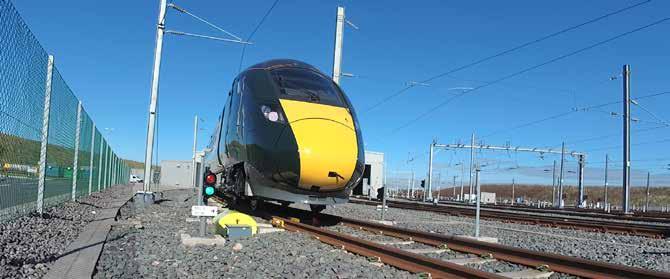36
ROLLING STOCK/DEPOTS
Safety by Design A
lthough rail maintenance facilities have a high
Time for change
concentration of people, the safety of depot
Achieving high operational throughput while keeping the risk to staff as low as is reasonably possible requires the right safety culture and effective follow up of health and safety incidents. Whilst “there has been no sustained change in the number of recorded near-miss events involving rail workers over the last five years”, the RSSB Annual Health and Safety Report 2019/20 states that “although train operators input depot accidents to SMIS (Safety Management Intelligence System the rail industry’s on-line health and safety reporting system), other organisations that carry out train care and maintenance do not. This means the industry does not currently have a complete picture of depot risk. This needs to change. In order for the risks to staff at maintenance depots to be fully addressed, they must first be accurately reported. Considering that the real harm numbers for depots are likely to be much higher than recorded, it is clear that changes need to be made.
workers does not have the same focus as there is for track workers.
With a third of workforce fatalities occuring in depots in the period covered by the latest RSSB report, there is a need for a depot worker safety task force as there is for track workers. This would help provide a focus on the safety of the railway in its entirety, ensuring everyone returns home safely to their families each day, across the entire network.
The risks to depot staff The risks that face rail maintenance staff during their day-to-day work are undeniable; high speed vehicles, high voltage electricity and powerful machinery combine to make modern depots potentially deadly places to work. This is further compounded by the growing number of vehicles on the network, leading mounting pressure on operators and a desire to achieve ‘pitstop style’ servicing. With existing facilities having finite space, and with greater through-put being required, an increasing amount of work is being carried out in non-traditional areas such as stabling roads. It is becoming common place for cleaning, fuelling, sanding, the emptying and cleaning of controlled-emission toilets (CET) and even minor maintenance activities to be carried out on stabling roads. These tracks typically do not have depot protection systems, so staff protection is dependant on rules compliance which does not protect against human error.
and sidings s t o p e d , s d r “Ya % of all 0 2 r o f t n u o c ac ith 29% w m r a h e c r workfo e last five h t in s ie t li a t of fa in Yards, g in r r u c c o s r yea (YDS).” s g in id S d n a Depots nual Health n A B S S R : e Sourc rt 2019/20. o p e R y t fe a S and
Zonegreen's DPPS in Operation.
Rail Engineer | Issue 188 | Jan-Feb 2021













